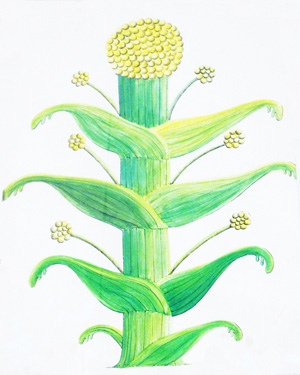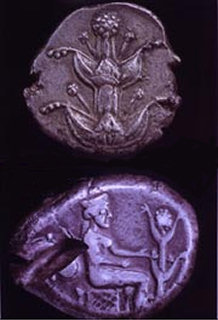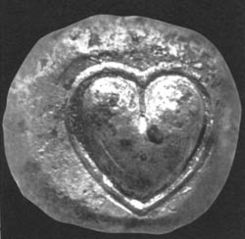The Lost Panacea of Silphium
 Native to the ancient Greek colony of Cyrene (located in modern day Libya), Silphium (also known as laser) is an extinct plant that, in its heyday, was one of the most treasured medicinal resources of the ancient world. Employed by cultures all around the Mediterranean, Silphium was used as a spice, a cure-all medicinal remedy, a form of birth control, and an agent for pregnancy abortion. Famed scholars ranging from Pliny the Elder to Herodotus to Theophrastus all wrote of Silphium’s legendary potency. Despite its widespread popularity, Silphium allegedly refused to grow anywhere aside from Cyrene. The colony became so closely identified with the plant that it appears on the settlement’s coins.
Native to the ancient Greek colony of Cyrene (located in modern day Libya), Silphium (also known as laser) is an extinct plant that, in its heyday, was one of the most treasured medicinal resources of the ancient world. Employed by cultures all around the Mediterranean, Silphium was used as a spice, a cure-all medicinal remedy, a form of birth control, and an agent for pregnancy abortion. Famed scholars ranging from Pliny the Elder to Herodotus to Theophrastus all wrote of Silphium’s legendary potency. Despite its widespread popularity, Silphium allegedly refused to grow anywhere aside from Cyrene. The colony became so closely identified with the plant that it appears on the settlement’s coins.

Silphium, here seen on Cyrene's coins, was the colony's chief export. The plant was notoriously resistant to cultivation, and is believed to have been harvested to extinction within the first few centuries AD.
Silphium was so strongly desired by various ancient civilizations that it was, at times, valued above currency. With some Romans contending that the plant was a gift from the god Apollo, its extinction was considered a great tragedy. Pliny even wrote that the last known Silphium plant was given to the Roman Emperor Nero himself.

An artifact from the 6th century believed to depict King Arcesilaus II of Cyrene overseeing the weighing of Silphium.
The Egyptians shared the Romans’ veneration of the plant, associating its with human love and sexuality. The Egyptian glyph signifying the heart portion of the soul, in fact, may have been meant to picture the seed of the Silphium plant. This character, known to the Egyptians as Ib, is likely the origin of our modern heart symbol.

Here is an ancient Cyrene coin bearing the image of a Silphium seed. Its likeness both to the Egyptian Ib and to the modern heart symbol is striking.
While the world has been without Silphium and its powers for well over a millennium, our modern culture still bears its mark. Every time a love-dazed youth carves a heart into a tree or inserts a whimsical, heart-shaped emoticon into an online conversation, the plant that once commanded a king’s ransom is winking at us from the ghostly recesses of the Earth’s past. Like the Dodo bird that gave us an insult implying stupidity or the dinosaur that inhabits every child’s imagination, Silphium’s potency is strong enough to overcome the silencing power of extinction itself.
Some Further Reading:
Some information about Silphium’s possible use as birth control and an abortifacient
An article entitled “Abortion in the Ancient and Premodern World”
An article about ancient methods of measurement, including brief mention of Silphium from Cyrene
An essay addressing the five parts of the Egyptian soul, including Ib
keith bentham said,
October 22, 2013 at 7:14 pm
A fascinating plant. I am an artist, sometime conservationist, botanist, illustrator,that has worked in archaeo-reconstruction. I have found a French etching of a sculpture from Pergamum showing a very detailed realistic carving of what can only be the silphium plant. The amazing thing is that you can see that it is this plant that is the basis for the Corinthian column. The foliate leaves of classical architecture are silphium and not acanthus at all. Acanthus actually looks nothing like the leaves on Classical architecture. The leaves are also associated with the egg and dart pattern which again fertility control that would be associated with life and death. I can only surmise that the use of the columns throughout the classical world symbolised wealth, trade and commerce as derived from Silphium.